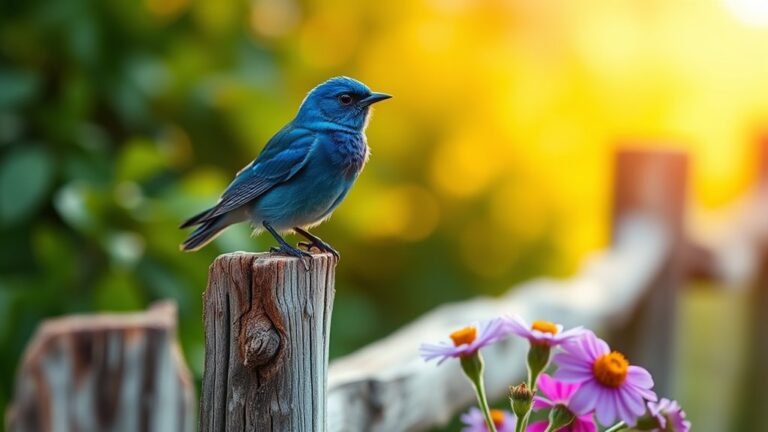What Does a Killdeer Bird Look Like? Spotting This Ground-Nesting Bird
When you see a Killdeer, you will recognize its medium size, measuring 9 to 11 inches long. Its black crown and striking brown and white feathers stand out. The underbelly features a prominent white color, marked by two bold black bands across the chest. You can find this ground-nesting bird in open fields or near shores. Its unique behaviors make it easy to identify, even from a distance. Keep an eye out for these characteristics next time you are in their habitat.
Key Takeaways
The Killdeer is a medium-sized bird that measures 9 to 11 inches long. It has long legs for quick movement. Its feathers are a striking mix of brown and white. A bold black crown on its rounded head makes it easy to identify.
Two black breast bands stand out against its white underbelly, helping with visual recognition and blending into its environment. The Killdeer has a bright orange patch on its tail, which you can see when it flies.
To find a Killdeer, visit open fields or gravel areas. Listen for its loud, two-syllable call, which helps you locate it.
Physical Characteristics of the Killdeer
When you see a Killdeer, its appearance stands out. This medium-sized bird measures about 9 to 11 inches long. It has long legs that allow for quick movement. The bird features brown and white feathers that create a striking contrast, making it easy to recognize.
The Killdeer is larger than many shorebirds but smaller than a pigeon. When it flies, you can see white stripes on its wings that reflect sunlight. Its round head shows a bold black crown, which helps in identification.
These physical traits help the Killdeer adapt to different environments, making it a fascinating bird to observe.
Distinctive Color Patterns and Markings
The Killdeer is easy to identify because of its size. Its distinctive color patterns and markings make it stand out even more. These features help the bird camouflage itself in its surroundings.
Here are the key visual characteristics:
- Two black breast bands: These bold markings contrast sharply with its white underbelly.
- Brownish-gray upper plumage: This coloration helps the bird blend into its habitat.
- Bright orange patch: Located on the tail, this patch is visible when the bird flies.
- Juvenile plumage: Young Killdeer have a softer, mottled brown appearance, different from adults.
These unique patterns make the Killdeer intriguing and skilled at hiding in plain sight.
Observing these features can enhance your appreciation of this bird.
Unique Behaviors and Nesting Habits
The Killdeer displays unique behaviors that aid its survival. It nests in shallow depressions, often in gravel or bare soil.
The Killdeer is very protective of its eggs. When it senses a threat, it performs distraction displays to lead predators away from the nest. If danger approaches, the Killdeer may feign injury, dragging itself along the ground.
This tactic helps keep its young safe. Watching these behaviors can enhance your appreciation for this resourceful bird and its clever strategies for survival.
Habitat Preferences and Distribution
Killdeer are commonly found in open areas throughout North America. They prefer habitats with good sightlines and ground cover. These birds thrive near water and often return to the same nesting sites annually.
During migration, they seek open fields, farmland, and gravelly terrains for breeding.
Key habitat preferences include:
- Open fields for finding food and nesting
- Riversides and wetlands for food resources
- Gravel pits and sandy areas for nesting similar to their natural environment
- Urban areas, showing their ability to adapt
Knowing these preferences improves your chances of spotting a Killdeer. They blend well with their surroundings, making them a delight to observe.
Tips for Spotting a Killdeer in the Wild
To spot a Killdeer in the wild, visit open fields, gravel areas, or shores where they live. Go early in the morning or late in the afternoon for the best chance to see them.
Look for their unique brown and white coloring. Listen for their loud, two-syllable call to help locate them.
When birdwatching, approach quietly and stay low to the ground. Keep a respectful distance to protect the bird's space.
Be patient; staying still may encourage a Killdeer to appear. You might even see it perform its distraction display, which is a fascinating behavior.
Enjoy watching!
Frequently Asked Questions
What Do Killdeer Eat?
Killdeers eat a variety of foods. Their diet mainly consists of insects, worms, and small invertebrates. They hunt for food by running on open ground. As they move, they find their meals while staying alert to potential dangers. Watching them feed can be quite interesting and enjoyable.
How Long Do Killdeer Live?
Killdeer usually live for three to five years. They thrive in different places like fields and shores. Their lifespan can change based on things like food supply and predators. Enjoy watching these strong birds when you see them.
Are Killdeer Migratory Birds?
Yes, killdeer are migratory birds. They travel from their breeding grounds in North America to warmer areas for the winter. You can often see them in fields or wetlands, showing their ability to adapt to different environments. Watching these birds can be a rewarding experience as they move between locations.
What Is the Killdeer's Mating Season?
The killdeer's mating season begins in early spring. During this time, male killdeers perform interesting courtship behaviors. They show their skills and patterns to attract female partners. These displays create a captivating experience for anyone observing them.
Do Killdeer Have Any Predators?
Killdeer face threats from predators such as foxes and raccoons. They have a unique way of protecting their nests and young. When a predator approaches, killdeer often pretend to be injured. This behavior distracts the predator and leads it away from their young. This clever tactic helps ensure the safety of their offspring.

Ava is a bird enthusiast and nature lover who has spent countless hours observing and learning about the fascinating world of birds. With a passion for sharing her knowledge and inspiring others to appreciate the beauty of birds, Ava writes about her experiences and insights on avianadmirer.com.







